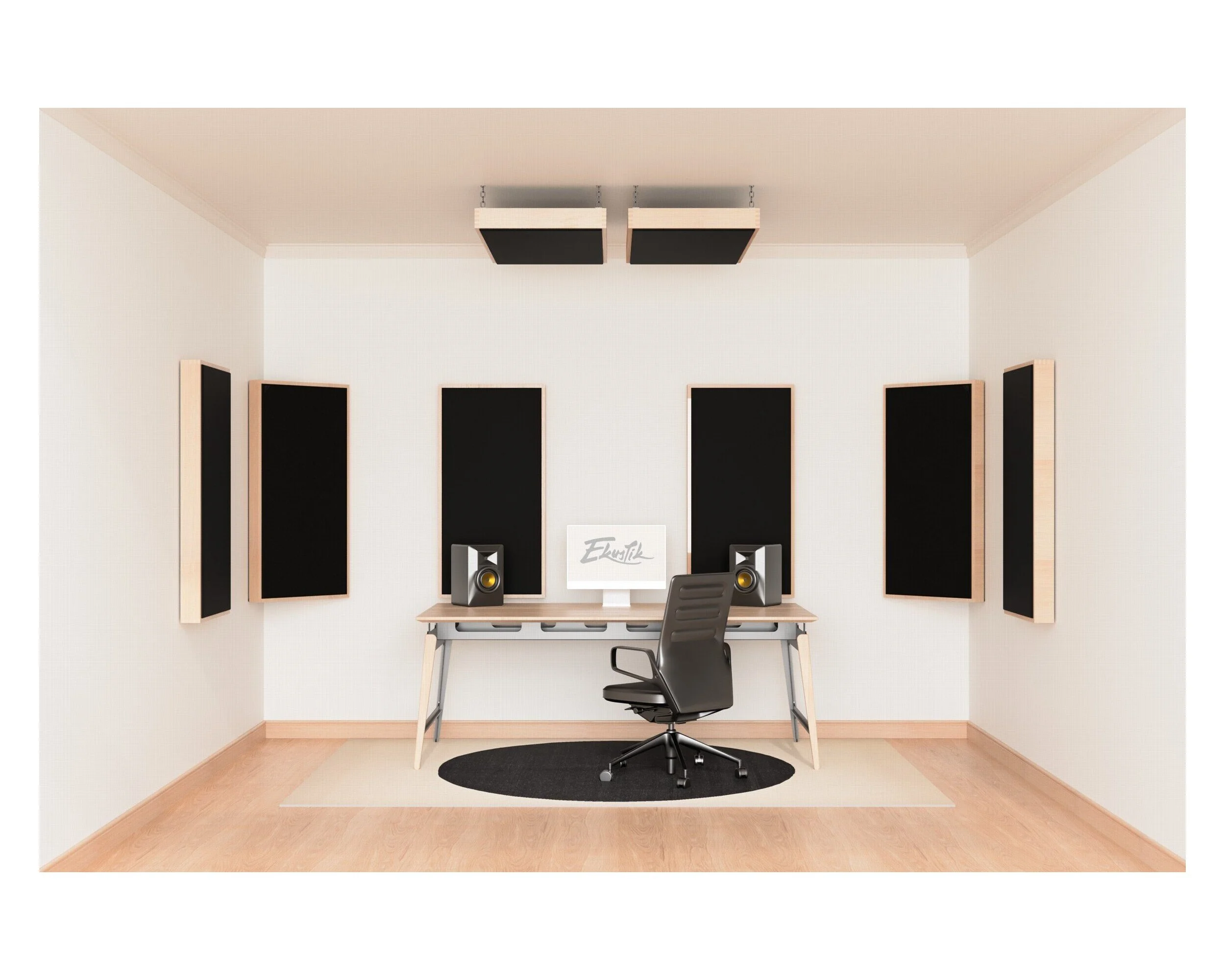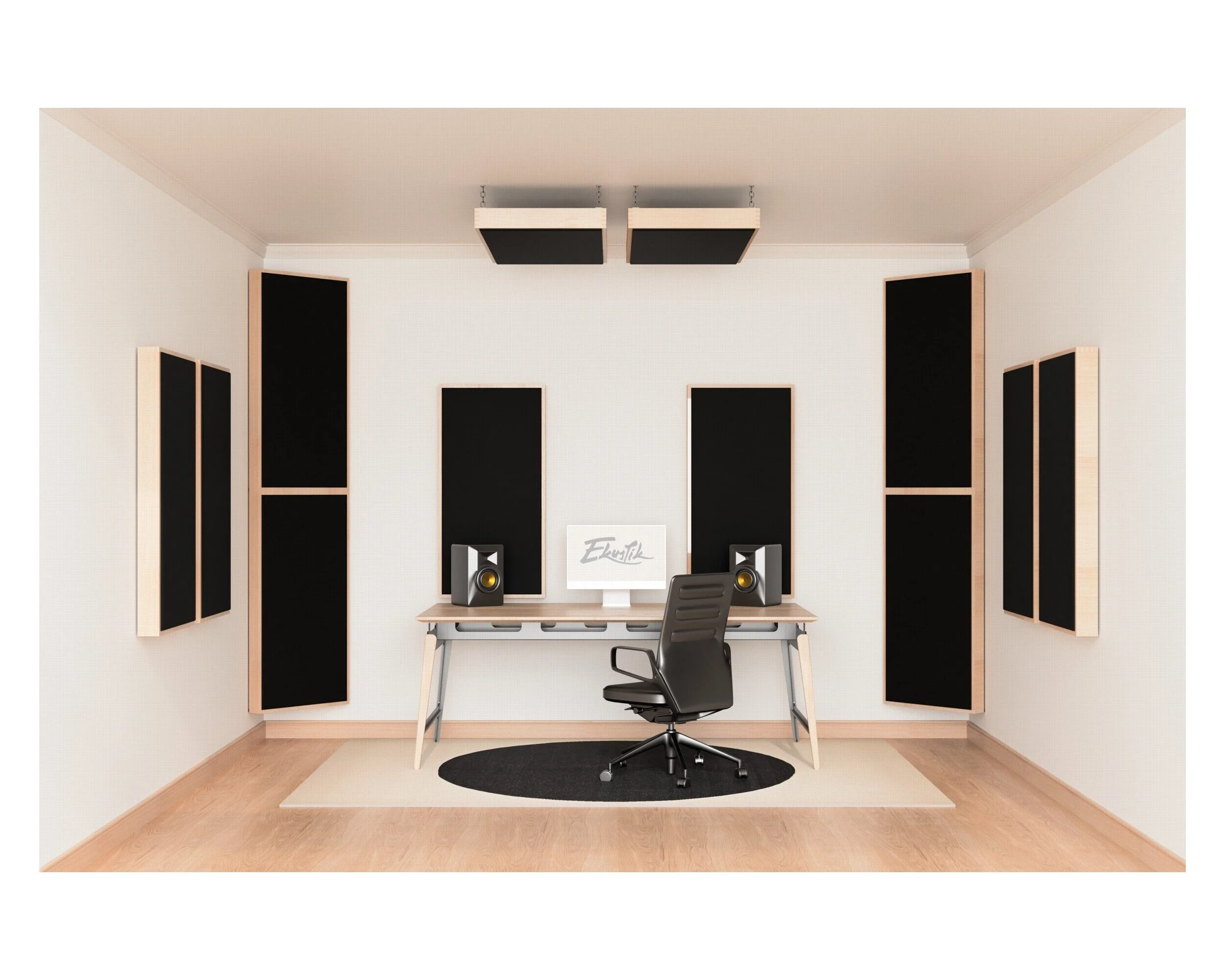Bass absorption
Taming the low freqencies
Bass traps & resonators
Room treatment kits
How we do it
FAQ: Bass Absorbers & Resonators
How do your bass absorbers achieve such high effectiveness?
We apply science and a hands-on approach to achieve the highest possible effectiveness, reliably absorbing frequencies below 100 Hz.
We achieve this by combining multiple absorption technologies together—like porous absorption and innovative membrane technology—to really give you the biggest bang for the buck. Every single absorber that leaves our workshop is a unique and truly functional piece of acoustic furniture.
Why should I choose your bass absorbers over foam bass traps?
Foam bass traps (corner pieces) are usually better than nothing, but if you take acoustics seriously, they are a poor choice.
Performance: Our bass absorbers perform more than two times better than classic foam bass traps, especially at critical low frequencies.
Aesthetics: Not only do our bass absorbers look like classy furniture, but they are also vastly superior performers. We believe you shouldn't have to settle for poorly performing foam glued in your corners.
Why are the corners of the room so important for bass absorption?
You can't escape the bass. Low-frequency sound waves have the highest energy precisely in the corners of the room. That’s why you want to absorb them right there.
The smaller and more cubic the design of your room, the more low-frequency mess your room will produce. This is due to room modes, which are the collection of resonances that exist in the room. If your room is smaller or rectangular, you'll likely need more bass absorption than you expect.
How many bass absorbers should I use?
Start by putting at least two but preferably four pieces in the corners of your room. This will certainly improve the acoustics, but it may not be enough.
Having said that, more is not necessarily better. Before you order additional absorbers, we recommend you consult our room modes calculator and measure the frequency response. This will help you decide exactly how many absorbers you really need. It isn't as complicated as it might sound, but feel free to get in touch if you need any help.
Is the Woody Wavy a "bass trap?"
Absorbers designed to damp low-frequency energy are commonly referred to as bass traps. This is despite the fact that technically speaking, there is no way for you to trap bass. That being said, we don’t mind if you call our Woody Wavy a bass trap. What matters to us is that it works—and works exceptionally well.
Why is the Woody Wavy so expensive?
The price is higher because the product is both high-performing and costly to produce. Woody Wavy combines the benefits of conventional porous absorbers and innovative membrane technology, featuring a membrane that is thin and flexible, despite being heavy. This sophisticated design translates into market-leading effectiveness across the entire deep and low bass frequency spectrum up to 100 Hz.
What is the difference between the Woody Wavy absorber and the Woody Resonator?
The distinction lies in their targets:
Woody Wavy (Broadband Absorber): Designed to absorb as much bass energy as possible across a wide spectrum (40-80 Hz).
Woody Resonator (Tuned Absorber): Designed to absorb energy only within a very narrow frequency spectrum (e.g., 45-48 Hz) to target specific, problematic room modes.
Can I use the wall panels (Woody Queen) instead of the Woody Wavy?
Woody Queen panels are quite effective at low frequencies, but they are not quite as effective as a Woody Wavy.
If Woody Wavy is out of your budget, conventional porous features like Woody Queen can do a good job. Just remember that because low-frequency sound waves are very long, they need to be absorbed quite far from the wall. You will need to leave a gap behind the Woody Queen panels to increase their low-frequency effectiveness.
Where should I place the Woody Resonator?
Placement is recommended as close to the listening position as possible. By experimenting with the placement, you can find out that in some parts of the room, the resonator might absorb more energy than in others. Sidewalls and front walls close to the corners are ideal starting points.
How many resonators should I use?
While a single resonator will absorb a lot of energy over a narrow frequency spectrum, more are usually required to achieve the best result, especially in bigger rooms. You can start with one resonator tuned to a specific frequency. If the peak is still too high, you can add more.
In a typical home studio, you’ll probably need at least two resonators to attenuate the sound pressure level by more than a few dB. If the necessary reduction is only 1-2 dB, one should be enough.












